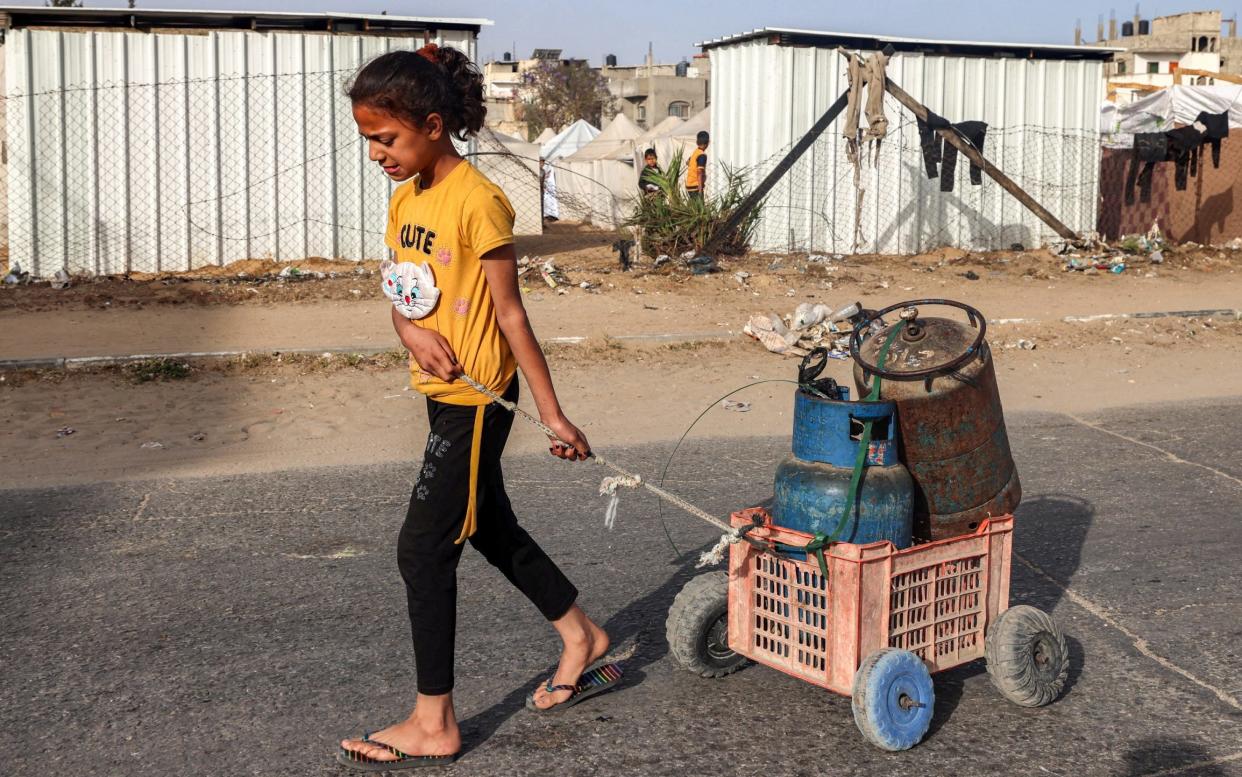Israel prepares to evacuate more than 1m Palestinians before Rafah offensive

Israel is preparing to evacuate more than one million Palestinians from Rafah ahead of a planned ground invasion to uproot Hamas from the southern refuge city, according to reports.
The Israel Defense Forces will spend the next two to three weeks moving civilians from the overcrowded city to places further north, including Khan Younis.
The move comes ahead of a six-week military operation, according to sources cited by the Wall Street Journal.
Tents, medical facilities and food distribution centres would be set up and the evacuation would be done in co-ordination with the US, Egypt and other countries in the region, unnamed Egyptian officials told the paper.
The details of the plan have not been officially confirmed, but satellite images from Khan Younis, to the north of Rafah, show what appears to be work to set up a new tent city.
Rafah is believed to shelter 1.4 million people, most of whom had fled their homes in the north earlier on in the war. The US has previously said that Israel should not invade without a proper plan to safely evacuate them.
International aid organisations have also repeatedly warned that an all-out ground offensive would lead to massive loss of life and further compound the humanitarian catastrophe in the sealed-off enclave, where famine is believed to have begun.
But Israel has vowed to press ahead. “One, it’s going to happen. Two, we’re going to have a very tight operational plan because it’s very complex there. Three, there’s a humanitarian response that’s happening at the same time,” an Israeli security official was quoted as saying by the Wall Street Journal.
The IDF reportedly plans to move troops into Rafah gradually, targeting the areas in which it thinks Hamas’s remaining four battalions are hiding over the course of six weeks.
Egyptian officials have publicly denied being involved or even briefed on the plans of evacuation.
But the satellite images from around Khan Younis show what appears to be clusters of tents constructed just outside the city. Images from three weeks earlier show the compound significantly growing in size.
Earlier this month, satellite images from an area just to the west of the wall separating Rafah and Egypt also appeared to show Egyptians building a fortified buffer zone to take in displaced Palestinians.
Egypt has vehemently denied any plans to host Gaza’s residents, saying that opening the border to the Palestinians would only help Israel to displace them permanently.
Washington has recently hardened its tone on the proposed invasion. On Monday, Matthew Miller, a US State Department spokesman, said: “We don’t want to see Palestinians evacuated from Rafah unless it is to return to their homes.
“We don’t think there’s an effective way to evacuate 1.4 million Palestinians. There’s no way to conduct an operation in Rafah that would not lead to inordinate civilian hardship and would severely hamper the delivery of humanitarian aid.”
Rafah is crucial to the supply of aid into Gaza, with most food and medicines entering the strip through two border crossings near the city. The overwhelming majority of aid groups, including UN agencies, also run their Gaza-wide operations from there.
On Tuesday, the UN’s agency for Palestinian refugees said it had seen “very little significant change in the volume of humanitarian supplies entering Gaza or improved access to the north” despite the Israeli government’s assurances to the contrary.
About 15 per cent of aid missions to the north and south of Gaza have been denied or impeded by the Israeli authorities in the first three weeks of April, the report said.



